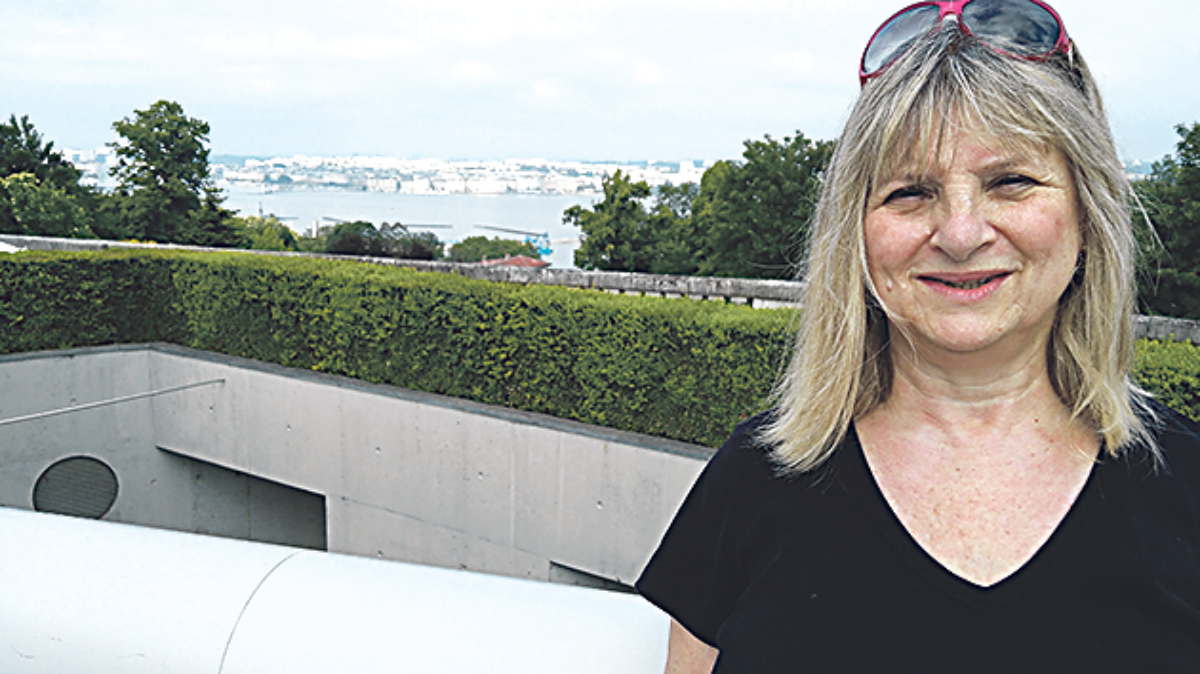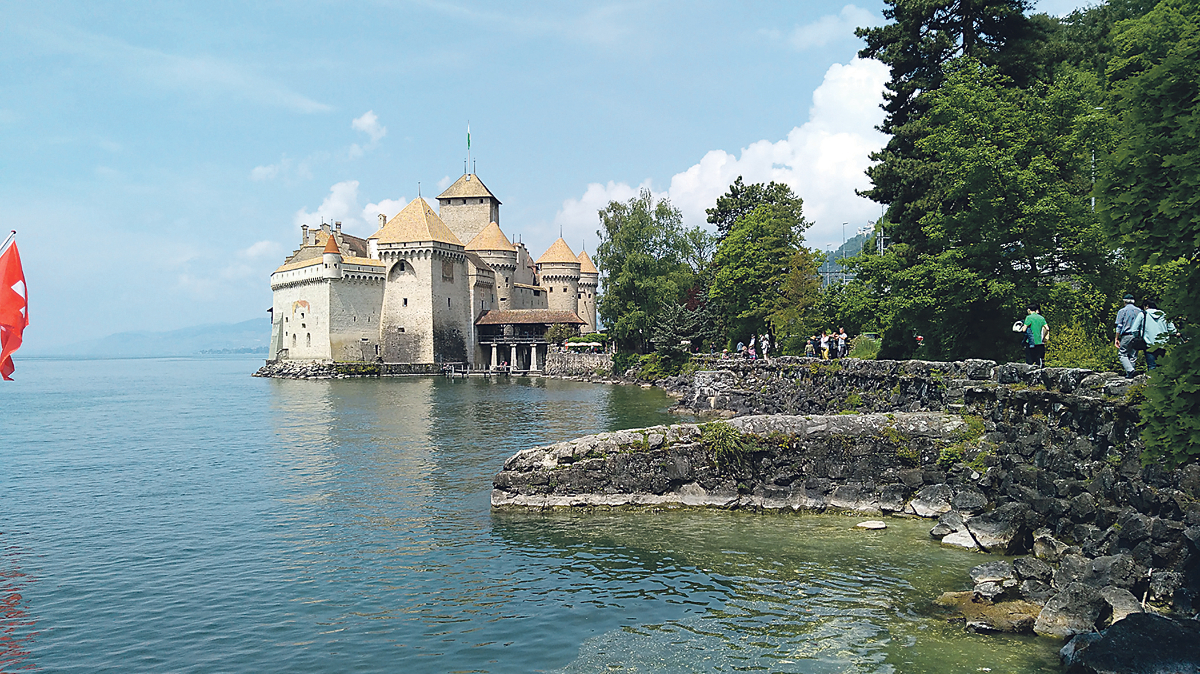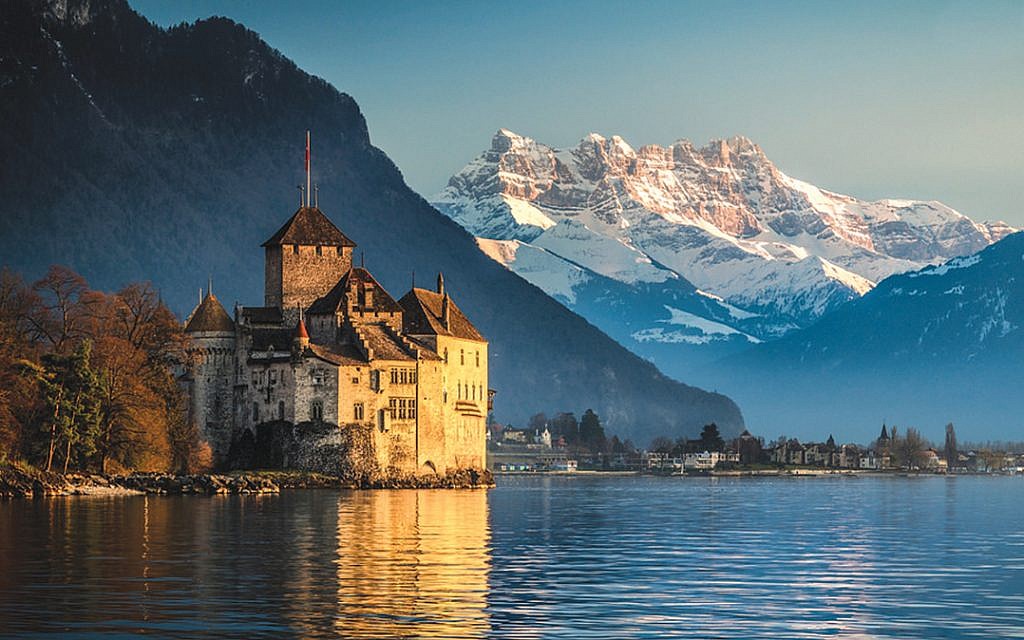Swiss you were here!
Lucy Daltroff travels to Lake Geneva, where Mary Shelley wrote her epic horror story Frankenstein, and discovers the sad fate of its medieval Jewish community
The charms of Lake Geneva are synonymous with the natural beauty of Switzerland. Less well-known perhaps are the strong literary connections of this small European country.
T.S. Eliot, James Joyce, Voltaire, Henry James and Charles Dickens are but a few of the major literary names that have been inspired by the sweeping Swiss landscape.
So too was Mary Shelley, whose famous novel Frankenstein was published 200 years ago, so it seemed more than apt to mark the occasion with a tour of the area where the story was conceived and many of the scenes are set.
Get The Jewish News Daily Edition by email and never miss our top stories Free Sign Up
Mary Godwin was just 18 when she left home and ran away with her married lover, Percy Shelley. In 1818, they left for the the shores of Lake Geneva, accompanied by their son, William and her step-sister Claire Clairmont, who was pregnant by Shelley’s friend, Lord Byron.
Although the Shelley party had their own accommodation, much of their time was spent at the Villa Diadoti where Byron was staying.
The villa still exists today in the elegant suburb of Cologny. Although it is privately owned, I was able to peer at the house from a nearby meadow, taking in the view of the largest lake in Western Europe, the city of Geneva and at the same time admiring its handsome white frontage and chic green shutters.
I saw it on a sun-drenched day, but 200 years ago circumstances were less favourable. The eruption of Mount Tambora, in what is now Indonesia, disrupted all the European weather patterns and Switzerland was plagued with incessant rain.
Confined to the house, Byron suggested to the assembled company that they should take part in a competition to write the most frightening horror story.
Mary took the longest time making her choice, but listening avidly to the discussions between Shelley and Byron on automated beings and the possibility of reanimating a corpse, she came up with her masterpiece – now often regarded as the first gothic novel.
I met with David Spurr, professor of English at the University of Geneva and authority on the book, who showed me a copy of the original manuscript. It was interesting to see there were a number of suggestions in the margins written by Shelley himself, elevating the narrative in a poetic and descriptive way and showing a skill that the young Mary herself may have lacked.
Mary first published her masterpiece anonymously, as women authors at the time were rare and unpopular. Not much happened until the respected Sir Walter Scott wrote a favourable review. This did the trick – and sales boomed.
The monster in Frankenstein, who remains unnamed throughout the book, murders his first victim, William, in the Plainpalais quarter of Geneva. It is now one of the most diverse areas of this, the second city of Switzerland, teeming as it is with university students, bars and restaurants. In 2014, on the precise site of this first murder, a huge bronze statute was erected depicting the creature. It’s a ghoulish reminder of the pathos of a fictional monster, who carries an expression of both sadness and evil.
Just 20km from central Geneva is Salève, a mountain in the French Prealps often referred to as the “Balcony of Geneva”.
In Frankenstein, the monster leaps up the gnarly crags while escaping his crimes, causing his creator to lament: “Who could arrest a creature capable of scaling the overhanging sides of Mont Salève?”
For anyone who doesn’t want to make the ascent on foot, you can pay just a few Swiss Francs for a ride in the speedy cable car.
Taking the first one of the day avoids the crowds. At the top is one of the most spectacular panoramas in Europe, especially on a sunny day. The views over both France and Switzerland are quite breath-taking.
I could see fields, rivers, lakes and even CERN and, in the distance, Mont Blanc. There are also plenty of things to do at the summit, with a choice of hiking options and an excellent, fairly-priced restaurant.
Beautiful as Geneva is, it is really all about the lake. There are a number of ways to see it at close hand and enjoy the famous Jet d’Eau Fountain, installed in 1886. I enjoyed a tour on board the Belle Epoque boat, “La Suisse”, which culminated at the impressive Chateau de Chillon, a medieval fortress and later a prison. It was here, that once the weather had perked up a bit, Byron arrived with Shelley in June 1816 and was inspired to write the other literary highlight of this region, his poem, “The Prisoner of Chillon”.

This association has made the castle the most visited historical building in Switzerland. It’s a huge place set among stunning scenery, yet steeped in history.
Organized tours point out Byron’s possible signature on a column in the dungeon but my guide went on to tell me a little more about the castle’s sinister past, which is not quite so well-documented.
Near to Chillon is the village of Villeneuve, where from 1284 there was a Jewish presence. When the Black Death arrived, rumours persisted that it was the community who had poisoned the wells and springs.
As a consequence, in 1348 the entire Jewish population was rounded up and arrested. Some committed suicide, while the rest were put in Chillon’s dungeons where they were tortured – including the children. A promise was made during this horrendous time that they would be forgiven if they confessed.
Someone did, in front of a tribunal. Of course the forgiveness was not upheld and eventually all were murdered by the side of the lake.
Travel tips
Lucy travelled to Lake Geneva with SWISS (swiss.com), which offers more than 180 weekly flights, with fares starting from £74 one-way. For travel options around Switzerland, visit swisstravelsystem.co.uk, or to explore more about Lake Geneva, visit myswitzerland.com

Thank you for helping to make Jewish News the leading source of news and opinion for the UK Jewish community. Today we're asking for your invaluable help to continue putting our community first in everything we do.
For as little as £5 a month you can help sustain the vital work we do in celebrating and standing up for Jewish life in Britain.
Jewish News holds our community together and keeps us connected. Like a synagogue, it’s where people turn to feel part of something bigger. It also proudly shows the rest of Britain the vibrancy and rich culture of modern Jewish life.
You can make a quick and easy one-off or monthly contribution of £5, £10, £20 or any other sum you’re comfortable with.
100% of your donation will help us continue celebrating our community, in all its dynamic diversity...
Engaging
Being a community platform means so much more than producing a newspaper and website. One of our proudest roles is media partnering with our invaluable charities to amplify the outstanding work they do to help us all.
Celebrating
There’s no shortage of oys in the world but Jewish News takes every opportunity to celebrate the joys too, through projects like Night of Heroes, 40 Under 40 and other compelling countdowns that make the community kvell with pride.
Pioneering
In the first collaboration between media outlets from different faiths, Jewish News worked with British Muslim TV and Church Times to produce a list of young activists leading the way on interfaith understanding.
Campaigning
Royal Mail issued a stamp honouring Holocaust hero Sir Nicholas Winton after a Jewish News campaign attracted more than 100,000 backers. Jewish Newsalso produces special editions of the paper highlighting pressing issues including mental health and Holocaust remembrance.
Easy access
In an age when news is readily accessible, Jewish News provides high-quality content free online and offline, removing any financial barriers to connecting people.
Voice of our community to wider society
The Jewish News team regularly appears on TV, radio and on the pages of the national press to comment on stories about the Jewish community. Easy access to the paper on the streets of London also means Jewish News provides an invaluable window into the community for the country at large.
We hope you agree all this is worth preserving.
-
By Laurent Vaughan - Senior Associate (Bishop & Sewell Solicitors)
-
By Laurent Vaughan - Senior Associate (Bishop & Sewell Solicitors)
-
By Laurent Vaughan - Senior Associate (Bishop & Sewell Solicitors)
-
By Laurent Vaughan - Senior Associate (Bishop & Sewell Solicitors)






















